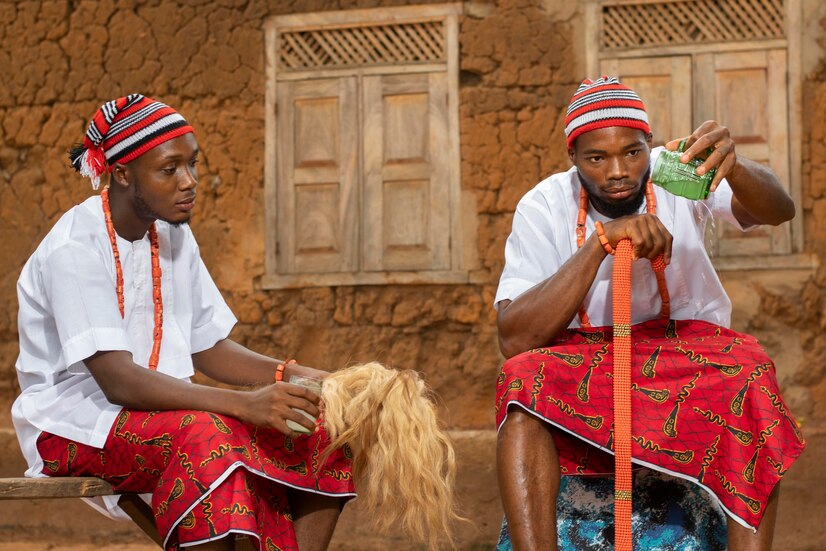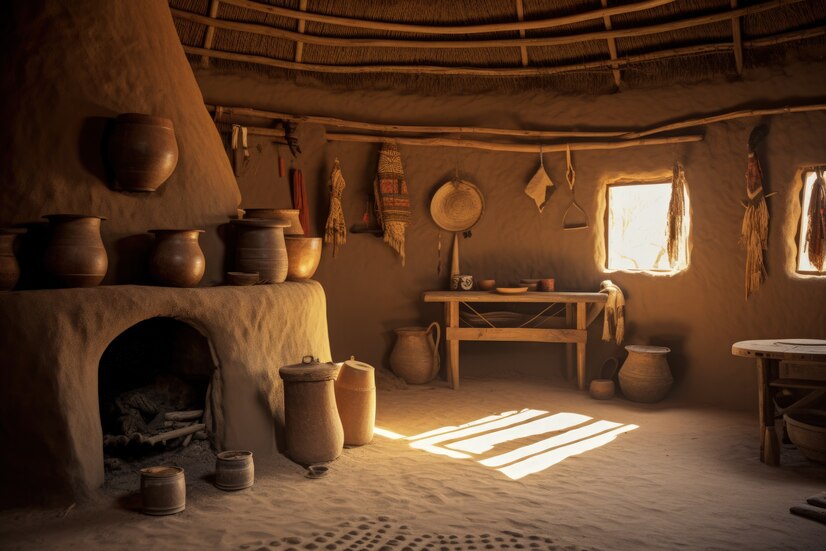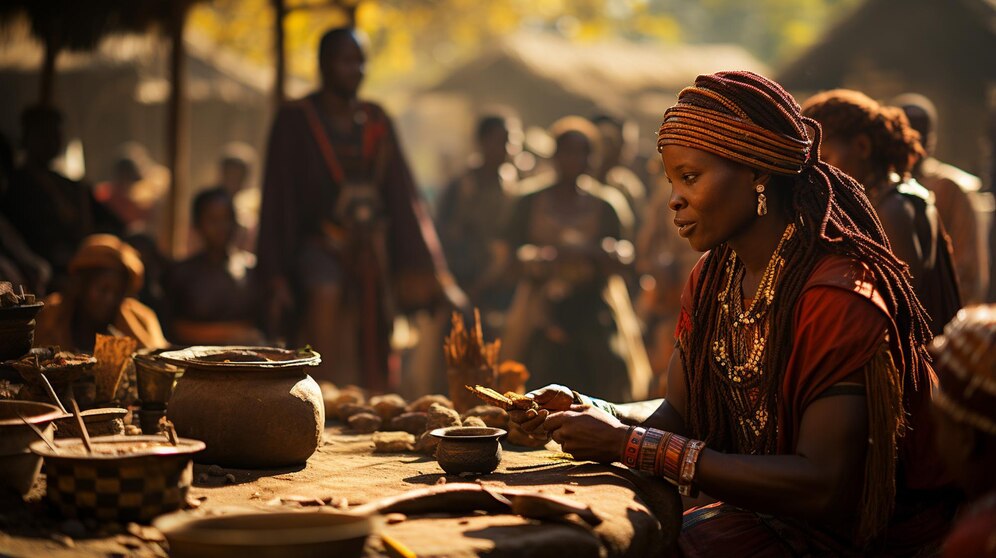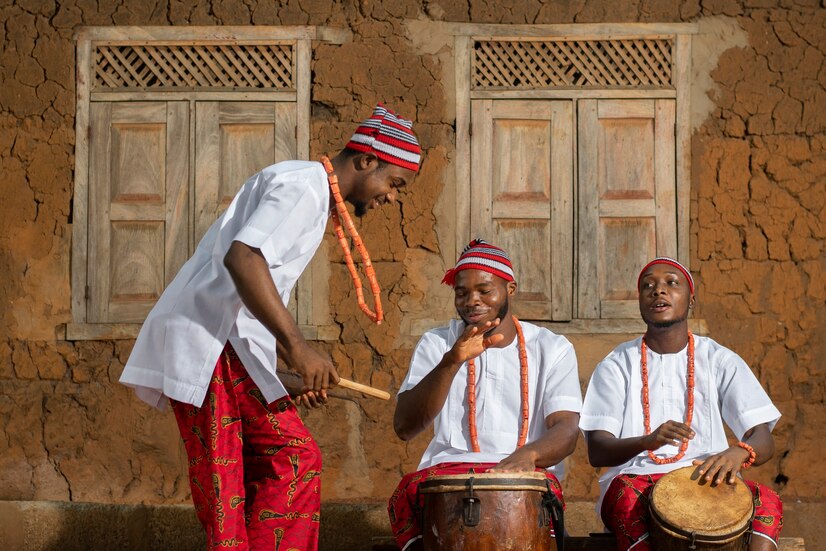The Amaziğ, often known as Berbers, have woven a rich cultural tapestry that extends far beyond the rugged landscapes of North Africa. This vibrant culture, with its deep historical roots and intricate traditions, is undergoing a remarkable revival that resonates across the globe.
In exploring the essence of the Amaziğ, we uncover a story of resilience, identity, and artistic expression that challenges the boundaries of time and geography. Join us as we unravel the threads of the Amaziğ legacy, discovering how their ancient wisdom and contemporary significance offer a unique lens through which to view our interconnected world.
The Historical Journey of Amaziğ
The Amaziğ people, known for their deep-rooted heritage, trace their origins back to the earliest inhabitants of North Africa. Their history is a profound narrative of endurance and adaptation, shaped by the dramatic landscapes of the Atlas Mountains and the vast Sahara.
Ancient Civilizations: Carthage and Numidia
The Amaziğ’s presence predates recorded history, but their impact became prominently noted with the rise of ancient civilizations such as Carthage and Numidia. In these realms, the Amaziğ were both allies and adversaries to the Phoenicians, and later, the Romans. Their strategic alliances and fierce resistance shaped the political and military landscapes of ancient North Africa.
Endurance through External Influences
Over the centuries, the Amaziğ faced waves of conquerors, from the Roman and Byzantine empires to the Arab invasions that brought Islam and new cultural dimensions. Each era left its mark, yet the Amaziğ preserved distinct aspects of their identity. The introduction of Islam, in particular, was a significant transformation, deeply influencing Amaziğ social structures, spiritual life, and artistic expressions.
The Arabization that followed did not erase their culture; instead, it added layers to their rich history. The Amaziğ adapted the Arabic script for their language, Tamazight, which became a symbol of their enduring cultural identity despite the prevailing Arab influence.
Resilience Through Resistance
Historically marginalized, the Amaziğ have continually fought for recognition and rights within the modern nations of North Africa. Their struggle is not just about preserving a language or traditions but maintaining a way of life that respects their ancient laws and communal values. This resistance is emblematic of their broader fight for cultural survival and autonomy.
The historical journey of the Amaziğ is not just a chronicle of survival; it is a testament to the resilience of a culture that has managed to preserve its unique identity and traditions despite centuries of external pressures and changes. This narrative sets the stage for understanding the contemporary significance of Amaziğ culture and its revival in modern times.
Language and Identity: The Pillars of Amaziğ Culture
Language and identity form the cornerstone of Amaziğ culture, embodying the resilience and unity of its people. Tamazight, the language of the Amaziğ, is not merely a means of communication but a symbol of cultural integrity and resistance against assimilation.
Significance of the Amaziğ Language
Tamazight has historically been the thread holding the Amaziğ communities together, enabling them to preserve a cohesive cultural identity despite geographical dispersion across North Africa. The language’s oral traditions, rich in proverbs, poetry, and storytelling, have been pivotal in transmitting historical knowledge, moral values, and the cultural heritage from one generation to another.
Linguistic Diversity
The Amaziğ language itself is diverse, with several dialects that vary significantly from region to region. These dialects include Tarifit, Tashelhit, and Central Atlas Tamazight, among others. The variety reflects the adaptability and regional nuances of Amaziğ communities, showcasing a rich linguistic landscape that adds to the cultural depth of the Amaziğ people.
Standardization and Preservation Efforts
In recent decades, there has been a significant push towards the standardization and official recognition of Tamazight. Countries like Morocco and Algeria have recognized it as an official language, marking a critical step in cultural preservation and empowerment. This official status facilitates its use in education and media, helping to revitalize the language among younger generations and integrate it more fully into public life.
The standardization of Tamazight also involves the development of a standardized script. The Tifinagh script, which has ancient roots, has been revived and modernized as a part of these efforts. Its adoption in educational systems and public signage symbolizes a reclaiming of identity and a celebration of Amaziğ heritage.
The role of language in preserving and asserting Amaziğ identity cannot be overstated. It is a powerful tool that not only connects the Amaziğ people to their ancestors but also acts as a living expression of their enduring culture and their aspirations for the future. Through these linguistic efforts, the Amaziğ not only maintain their historical continuity but also assert their place in the modern world, advocating for recognition and respect of their cultural rights.
Amaziğ in the Arts: A Rich Tapestry of Expression
The Amaziğ culture is celebrated for its vivid artistic expressions, which have both preserved ancient traditions and adapted to contemporary influences. Through textiles, music, and dance, the Amaziğ people express their cultural narratives, identity, and connection to the land.
Textiles: Weaving History and Identity
Amaziğ textiles are not just functional; they are laden with symbolism and history. The intricate patterns woven into each piece tell stories of the community’s life, beliefs, and the environment. Berber rugs and blankets, for instance, feature geometric designs that vary from tribe to tribe, each pattern holding different meanings and purposes. These textiles are a testament to the aesthetic beauty and symbolic depth of Amaziğ craftsmanship, passed down through generations of weavers—primarily women—who are custodians of this vibrant artistic heritage.
Music: Reflecting Spiritual and Communal Life
Amaziğ music is another cornerstone of their cultural expression, deeply intertwined with their social and spiritual lives. It ranges from the rhythmic beats of the Bendir drum, used in both celebrations and solemn gatherings, to the melodic strains of the loutar and the rebab, stringed instruments that narrate tales of valor, love, and community through their tunes. Music sessions are not merely performances but communal experiences that strengthen social bonds and transmit cultural values.
Dance: Social Cohesion and Cultural Expression
Dance in Amaziğ culture is as much about social cohesion as it is about entertainment or ritual. Traditional dances often involve group formations where the movements are synchronized, reflecting the community’s harmony and mutual support. These dances are performed during major life events such as weddings, births, and festivals, each dance style conveying specific emotions and stories inherent to those occasions.
Contemporary Artistic Contributions
In modern times, Amaziğ artists have ventured beyond traditional mediums to express their cultural identity and address contemporary issues. This includes fine arts, film, and theater, where they explore themes of cultural survival, modernity, and identity politics. These artistic endeavors not only enrich the Amaziğ cultural portfolio but also engage with a global audience, sparking interest and dialogue about the significance of Amaziğ heritage in today’s world.
Through these diverse forms of artistic expression, the Amaziğ people continue to celebrate and renew their rich cultural heritage. Each piece of art, whether a woven rug, a song, or a dance, is a thread in the larger tapestry of Amaziğ culture, highlighting their enduring spirit and creative resilience.
Cultural Traditions and Celebrations
Cultural traditions and celebrations are at the heart of Amaziğ identity, serving as vibrant expressions of community life and heritage. These events are not only festive occasions but also important rituals that reinforce social bonds and transmit ancient customs to new generations.

Key Festivals and Ceremonies
One of the most significant celebrations in the Amaziğ calendar is Yennayer, the Amaziğ New Year, which marks the start of the agricultural calendar. Celebrated with music, dance, and traditional foods, Yennayer is a time for communities to come together and wish for prosperity and good health. It’s also an opportunity for the Amaziğ to honor their ancestors and the land that sustains them.
Another pivotal event is the Imilchil Marriage Festival, held in the High Atlas Mountains. This annual gathering originated from a tragic legend about star-crossed lovers, transforming their sorrow into a joyous celebration where many couples marry. It serves both a practical social function and a symbolic reaffirmation of community ties.
Role of Rituals in Maintaining Cultural Heritage
Rituals play a crucial role in Amaziğ culture, from daily practices to life-changing events. For instance, naming ceremonies, weddings, and funerals all incorporate specific rituals that imbue these events with cultural significance and continuity. These rituals ensure that each generation inherits the collective wisdom and customs of their forebears, keeping the community tightly knit and culturally cohesive.
In agricultural societies among the Amaziğ, seasonal rituals connected to planting and harvest cycles are particularly important. These rituals not only celebrate the cycles of nature but also invoke blessings for bountiful yields and protection from natural calamities, reflecting the deep connection the Amaziğ maintain with their environment.
Contemporary Relevance of Traditional Celebrations
While deeply rooted in history, Amaziğ festivals and rituals have adapted to the modern context, addressing contemporary issues while staying true to their origins. For example, festivals now often include discussions on cultural preservation and the challenges of globalization, bringing traditional practices into dialogue with modern concerns. This adaptability demonstrates the dynamic nature of Amaziğ culture, capable of evolving yet retaining its core values and identity.
By celebrating their rich heritage through these traditional festivals and rituals, the Amaziğ not only preserve their history but also reinforce their identity in today’s rapidly changing world. These cultural practices are vital not just for their intrinsic value but also as a means of educating and engaging younger Amaziğ in the stewardship of their ancestral traditions.
Crossing Cultural Borders: Amaziğ Influence Beyond Local Boundaries
The Amaziğ culture, while deeply rooted in North Africa, has a significant impact that transcends regional borders, influencing art, craftsmanship, and communities globally. This cultural exportation and exchange facilitate a broader understanding and appreciation of Amaziğ heritage worldwide.
Global Appeal of Amaziğ Craftsmanship
Amaziğ craftsmanship, known for its intricate designs and meticulous attention to detail, has found a place in international markets and exhibitions. Products such as handwoven carpets, jewelry, and pottery are not only sought after for their aesthetic appeal but also for their cultural significance. These items carry with them stories and traditions that are emblematic of Amaziğ skill and cultural pride. Furthermore, these crafts provide economic opportunities for local artisans while promoting cultural preservation.
Diaspora’s Role in Cultural Preservation
The Amaziğ diaspora plays a crucial role in the preservation and dissemination of their culture. Emigrants from North Africa have established communities in Europe, North America, and other parts of the world, creating cultural enclaves where Amaziğ traditions are maintained and celebrated. Through cultural festivals, language classes, and culinary events, the diaspora ensures that Amaziğ heritage thrives far from its geographical origins.
Collaborative Cultural Projects
Internationally, collaborative projects involving Amaziğ artists and cultural practitioners help bring Amaziğ traditions to a global audience. These collaborations often take the form of music festivals, art exhibitions, and academic conferences that explore the intersections of Amaziğ culture with other global cultures. Such events not only highlight the richness of Amaziğ traditions but also promote cross-cultural understanding and appreciation.
Influence on Global Cultural Discourses
Amaziğ culture contributes to global discussions on issues such as indigenous rights, cultural preservation, and the importance of linguistic diversity. By sharing their experiences and practices, the Amaziğ people add a valuable perspective to these international conversations, advocating for recognition and support for marginalized cultures worldwide.
Through these various avenues, the Amaziğ culture crosses geographical and cultural boundaries, enriching the global cultural tapestry. This external influence not only fosters greater appreciation and understanding of Amaziğ heritage but also strengthens the cultural ties between the Amaziğ people and the global community, promoting a shared commitment to cultural diversity and mutual respect.
Challenges to Amaziğ Culture: From Marginalization to Revival
Despite its rich history and cultural significance, Amaziğ culture has faced numerous challenges throughout the centuries, from historical marginalization to contemporary threats. However, amidst these challenges, there has been a remarkable resurgence of interest in and efforts toward the preservation and revitalization of Amaziğ heritage.

Historical Marginalization
The Amaziğ people have long endured marginalization within the countries where they reside, facing discrimination and neglect from dominant cultural and political forces. This marginalization has often resulted in the suppression of their language, customs, and rights, contributing to a sense of cultural erasure and identity loss among Amaziğ communities.
Contemporary Challenges
In the modern era, Amaziğ culture continues to face challenges from various fronts, including urbanization, globalization, and political instability. Rapid urbanization has led to the erosion of traditional lifestyles and community structures, while globalization has brought both opportunities and threats to Amaziğ identity, as external influences reshape cultural norms and values. Additionally, political instability in some regions has further complicated efforts to preserve and promote Amaziğ culture, as governments prioritize other agendas over cultural rights and autonomy.
Resurgence of Interest
Despite these challenges, there has been a resurgence of interest in Amaziğ culture in recent decades, driven by both internal and external factors. Internally, there is a growing sense of cultural pride and identity among Amaziğ youth, fueled by increased access to education, media, and cultural activism. Externally, there is a growing recognition of the value of indigenous cultures and linguistic diversity, leading to greater support for Amaziğ cultural initiatives from international organizations and advocacy groups.
Efforts for Cultural Preservation
Efforts to preserve and promote Amaziğ culture take various forms, including language revitalization programs, cultural festivals, and advocacy for legal recognition and protection of Amaziğ rights. These initiatives are led by grassroots organizations, cultural associations, and dedicated individuals who are committed to safeguarding the legacy of the Amaziğ people for future generations.
The Future of Amaziğ Culture
Looking ahead, the future of Amaziğ culture is both challenging and hopeful. While the threats to its survival are real and complex, the resilience and determination of the Amaziğ people, coupled with increasing international support and recognition, offer reasons for optimism. By addressing the root causes of marginalization and fostering greater cultural pride and awareness, Amaziğ culture can continue to thrive and enrich the global cultural landscape for generations to come.
The Future of Amaziğ Culture: Preservation and Global Engagement
As the Amaziğ culture navigates the complexities of the modern world, there is a pressing need to ensure its preservation while also engaging with global audiences to promote understanding and appreciation. The future of Amaziğ culture hinges on efforts to safeguard its heritage, advocate for its recognition, and foster meaningful dialogue with the wider world.

Importance of Cultural Heritage
Cultural heritage is not just a relic of the past; it is a living, evolving expression of identity and belonging. For the Amaziğ people, preserving their cultural heritage is essential for maintaining a sense of continuity and connection to their ancestors, their land, and each other. It is also a source of resilience and empowerment, providing a foundation upon which to build a vibrant and sustainable future.
Support for Preservation Initiatives
Efforts to preserve Amaziğ culture require support from various stakeholders, including governments, civil society organizations, and the international community. This support can take many forms, such as funding for cultural preservation projects, legal recognition of Amaziğ rights and heritage, and the integration of Amaziğ history and language into educational curricula. By investing in these initiatives, stakeholders can help ensure that Amaziğ culture remains vibrant and accessible for future generations.
Inspiring Future Generations
Central to the preservation of Amaziğ culture is the engagement of young people, who are the custodians of its future. Educating and empowering youth to take pride in their cultural heritage, learn their language, and participate in cultural activities are critical steps in ensuring its continuity. By providing opportunities for young Amaziğ to connect with their roots and become active participants in cultural revival efforts, we can inspire a new generation of cultural leaders and advocates.
Global Engagement and Awareness
Engaging with global audiences is also crucial for the future of Amaziğ culture. By sharing their stories, traditions, and artistic expressions with the world, the Amaziğ people can foster greater understanding and appreciation of their heritage. This can be done through cultural exchanges, artistic collaborations, and digital media platforms that reach audiences far beyond the borders of North Africa. By engaging with the global community, the Amaziğ people can amplify their voice, build solidarity with other indigenous cultures, and advocate for their rights on the world stage.
Contemporary Significance of Amaziğ Culture
In today’s rapidly changing world, the Amaziğ culture holds significant relevance, both within North Africa and on the global stage. From political activism to artistic expression, Amaziğ identity continues to shape and influence various aspects of contemporary society.
Amaziğ Culture in Political Activism
Amaziğ culture plays a vital role in political activism, advocating for the rights and recognition of indigenous peoples within North Africa. Activists and organizations work tirelessly to raise awareness of Amaziğ issues, including language rights, cultural preservation, and representation in government and society. By asserting their cultural identity and demanding equal rights, the Amaziğ people are driving positive change and challenging the status quo.
Representation in Artistic Expression
Artistic expression is another avenue through which Amaziğ culture asserts its contemporary significance. From literature to visual arts, Amaziğ artists use their creative talents to explore themes of identity, heritage, and social justice. Through their work, they not only celebrate Amaziğ culture but also contribute to broader discussions about diversity, inclusion, and human rights.
Influence on Culinary Arts
Amaziğ culinary traditions also reflect the contemporary significance of the culture. From traditional dishes like couscous and tagine to modern interpretations of Amaziğ cuisine, food serves as a tangible expression of cultural identity and community. In recent years, Amaziğ cuisine has gained international recognition for its unique flavors and ingredients, contributing to the global culinary landscape.
Cultural Contributions to Global Dialogues
Amaziğ culture contributes to global dialogues on issues such as multiculturalism, diversity, and sustainable development. By sharing their traditions, values, and experiences, the Amaziğ people enrich the global conversation and inspire cross-cultural understanding and cooperation. Their resilience in the face of adversity and their commitment to preserving their heritage offer valuable lessons for building a more inclusive and harmonious world.
Conclusion
In conclusion, the journey through the rich tapestry of Amaziğ culture reveals a story of resilience, identity, and global significance. From its ancient origins to its contemporary expressions, Amaziğ culture continues to captivate and inspire, offering valuable insights into the human experience. As we celebrate the diversity and enduring spirit of the Amaziğ people, we are reminded of the importance of preserving and honoring cultural heritage in an ever-changing world.
By embracing the lessons and values embodied in Amaziğ culture, we can strive for a future that values inclusivity, respect, and cultural diversity. It is a call to explore, appreciate, and celebrate the enduring legacy of the Amaziğ people and their remarkable contributions to our shared humanity.
FAQs
1. What does the term “Amaziğ” refer to?
The term “Amaziğ” refers to the indigenous people of North Africa, often known as Berbers. They have a rich cultural heritage that includes unique languages, traditions, and artistic expressions.
2. How many dialects of the Amaziğ language are there?
The Amaziğ language is diverse, with several dialects spoken across different regions of North Africa. Some of the main dialects include Tarifit, Tashelhit, and Central Atlas Tamazight, each with its own distinct characteristics and variations.
3. What are some traditional festivals celebrated by the Amaziğ people?
The Amaziğ people celebrate a variety of traditional festivals that reflect their cultural heritage and beliefs. Some notable festivals include Yennayer, the Amaziğ New Year, and the Imilchil Marriage Festival, which celebrates love and community in the High Atlas Mountains.
4. How is Amaziğ culture influencing contemporary society?
Amaziğ culture continues to influence contemporary society through various avenues, including political activism, artistic expression, culinary arts, and contributions to global dialogues on multiculturalism and diversity.
5. What are some challenges facing the preservation of Amaziğ culture?
Despite its resilience, Amaziğ culture faces challenges such as historical marginalization, urbanization, globalization, and political instability. Efforts to preserve Amaziğ culture require support from various stakeholders and a commitment to recognizing and safeguarding its heritage for future generations.





